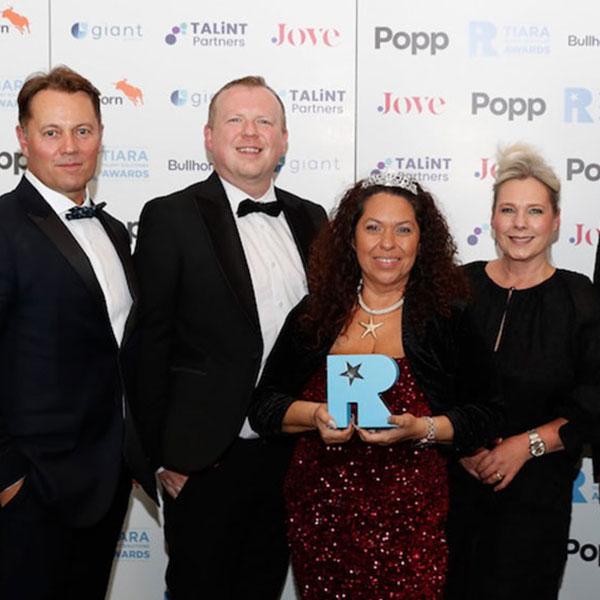The UK government has set a bold ambition: to create 400,000 new jobs in the clean energy sector by 2030. This initiative, designed to double employment in renewable energy, presents a significant opportunity. However, it also poses a formidable challenge for talent acquisition leaders. How can organisations find, develop, and retain the skilled professionals needed to fill these roles and drive the transition to a sustainable economy?
The answer lies in moving beyond reactive recruitment. Instead of simply posting jobs and hoping for the best, TA leaders must become strategic architects of their organisation's green skills pipeline. This requires a proactive approach focused on building internal capability, forging strategic partnerships, and embedding sustainability into the very core of talent strategy.
Understanding the green skills challenge
The government's plan focuses on 31 priority occupations, including plumbers, electricians, and welders, highlighting that the demand is not just for highly specialised scientists but for a broad range of technical and trade professionals. With roles in clean energy paying an average salary well above the national average, the sector is highly attractive. Yet, the sheer volume of demand means that traditional talent pools will not be enough.
This is where talent acquisition must evolve. The challenge isn't just about finding people, it's about creating the talent pipeline required for long-term success. Success will depend on three core pillars: strategic workforce planning, internal talent development, and authentic employer branding.
Building your green skills pipeline from within
The most sustainable source of talent is often the one you already have. Before looking externally, it is crucial to understand the skills and potential that exist within your current workforce. An internal-first approach not only accelerates time-to-fill but also boosts employee engagement and retention.
Map your internal capabilities
The first step is a thorough skills audit. Partner with learning and development (L&D) and business unit leaders to map the existing competencies across your organisation. Identify ‘green-adjacent’ skills - those that can be adapted and built upon for roles in sustainability and clean energy. For example, a project manager in a traditional sector has the core skills to manage a renewable energy installation project - they just need specific industry knowledge.
Focus on upskilling and reskilling: Once you have identified skills gaps, work with L&D to create targeted upskilling and reskilling programmes. These initiatives should be directly linked to your future workforce needs.
Leverage government initiatives: The government has announced £20 million in funding to help retrain oil and gas workers for the clean energy sector. TA leaders should actively create pathways for these professionals, whose extensive engineering and project management experience is highly transferable.
Build career pathways: Show employees a clear path for growth within the company. Define how a current role can evolve into a green-critical position through training and development. This transparency makes internal mobility a more attractive option.
Expanding your external talent pools
While nurturing internal talent is vital, the scale of the green transition demands a multi-channel external recruitment strategy. This means thinking creatively about where to find talent and how to attract it.
Partner with new educational institutions: The government's plan includes establishing five new ‘technical excellence colleges’ with pilot funding across Cheshire, Lincolnshire, and Pembrokeshire. TA teams should build relationships with these institutions now. By engaging with them, you can help shape curricula to match industry needs and create a direct pipeline of qualified graduates for apprenticeships, internships, and entry-level roles.
Target underrepresented groups: Within their announcement the government has specifically mentioned creating targeted programmes for veterans, ex-offenders, school leavers, and the unemployed. TA leaders should develop dedicated sourcing strategies to engage these talent pools. Partnering with community organisations and charities can help connect your company with skilled individuals who may otherwise be overlooked. This approach not only widens your talent pool but also strengthens your organisation's social impact and diversity credentials.
Aligning TA with ESG goals
In the green economy, how you recruit is as important as who you recruit. Your talent acquisition strategy must be a direct reflection of your company's environmental, social, and governance (ESG) commitments. This alignment builds credibility and attracts candidates who are motivated by purpose as well as salary.
Measure what matters
Move beyond traditional TA metrics like time-to-hire. To demonstrate strategic value, you need to track metrics that link talent activities directly to business and sustainability outcomes.
Internal fill rate for green roles: A high percentage of green jobs filled internally is a key indicator of a healthy talent pipeline and successful development programmes.
Time to productivity: Track how long it takes for new hires and internally promoted employees in green roles to become fully productive. This metric helps quantify the effectiveness of your onboarding and training.
Value-add metrics: Collaborate with the business to link talent initiatives to ESG goals. Consider tracking metrics like carbon reduction per employee or waste reduction linked to upskilling initiatives.
Governance as your guardrail
As scrutiny on corporate sustainability claims intensifies, the risk of ‘greenwashing’ - making unsubstantiated claims about environmental practices - is a major threat. A single misstep can severely damage your employer brand and corporate reputation. Robust governance is your best defence.
Align with audited data: Ensure every claim made in your recruitment marketing, from job descriptions to career pages, is fully aligned with the data in your legally vetted and audited ESG reports.
Establish a review council: Create a cross-functional group with leaders from TA, L&D, sustainability, legal, and communications. This council should review and approve all external messaging related to your green credentials to ensure every claim is accurate, substantiated, and free from exaggeration.
Your next move: Orchestrate your green skills strategy
The transition to a sustainable economy is a defining moment for talent acquisition. It is an opportunity to evolve from a reactive function into a central force for strategic business transformation. Building a sustainable workforce is the foundation for your company's future growth and resilience.
The first step is to bring the right leaders to the table. Propose a workshop with your counterparts in L&D and sustainability to begin building an integrated green skills strategy.





